- Home
- Isaac Asimov
In the Beginning Page 5
In the Beginning Read online
Page 5
9 And God said, Let the waters under the heaven be gathered together unto one place, and let the dry land appear: 26 and it was so.
26. The order of the steps in the Creation as described in the first chapter of Genesis is an extremely logical one, given the scheme of things as seen by the writers of the P-document. Creation proceeds from the outside inward, so to speak, revolving in closer and closer to humanity, which is viewed as the climax of creation.
Thus, the conversion of Cosmos to Chaos by means of dividing and separating things, and thus putting an end to the random intermingling that is the mark of Chaos, begins on the first day with the creation of light and its separation from darkness. This deals with the immaterial.
On the second day, the material portion of the Universe is taken up, but only the part farthest removed from humanity: the sky overhead rather than the ground underfoot. The sky is used to separate part of the waters from the rest.
It is only on the third day that God turns to the earth itself, and again the act is one of separation. The earth is made up of water and land, chaotically mixed together, to begin with, in a sort of liquid mud (one would presume), but at the word of God, all the water is pushed to one side, while the land is packed together, dried out, and allowed to arise above sea level.
There is an interesting reverse similarity between this and the formation of Earth as science sees it.
About 4.6 billion years ago, Earth was forming through the coming together of larger and larger objects conglomerating out of the original cloud of dust and gas that formed the solar system. Just as the sun grew hotter and hotter as it absorbed the incoming energy of the parts that formed it, so did Earth.
Gathering far less matter than the sun did, Earth never grew as hot as the sun. It was hot enough, however, to possess neither atmosphere nor ocean to begin with. The light molecules that would have made up the atmosphere or ocean moved too quickly at Earth’s high temperature to be held by its comparatively small gravitational field.
Yet some of the light molecules were held in more or less loose combination with other molecules that made up the solid substances of the forming Earth.
After Earth formed, the chaotic mixture of substances that composed it to begin with gradually settled out over some millions of years. The densest portions sank to Earth’s center, where there is now a metal core, chiefly iron and nickel in a 10-to-1 ratio, that is mostly liquid because of the high temperatures.
The lighter rock rose to form Earth’s mantle and crust. Little by little, natural geological processes forced the lightest molecules out of their loose combination with rock. Water collected and, being less dense than the rock, gradually rose and began to fill the lower basins of Earth’s uneven surface. The still lighter molecules of gaseous substances bubbled up through rock and water to form an atmosphere.
Scientists are far from agreeing on the precise details of ocean formation, but it would seem the process resembles the Biblical account in reverse.
The Bible makes it seem that solid land appeared out of an initial liquid mass, but from the scientific view, it would seem that an ocean appeared out of an initial dry mass.
10 And God called the dry land Earth; and the gathering together of the waters called he Seas; and God saw that it was good.
11 And God said, Let the earth bring forth grass, 27 the herb yielding seed, and the fruit tree yielding fruit after his kind, 28 whose seed is in itself, upon the earth: and it was so.
27. As soon as the dry land appeared, God created plant life upon it. This may seem to us a little premature, since other forms of life were not to be created until later in the scheme of Creation.
In ancient times, however, plants were not considered to be alive in the same sense that animals were.
It wasn’t till the 1830s, in fact, that scientific observations made it quite clear that plant and animal tissue were alike built up of cells; that both types of cells included the same general types of molecules and chemical reactions; and that both were equally alive.
To the writers of the P-document, however, the plant world was what the thinkers of the time supposed it to be—a food supply that it was the soil’s innate property to produce.
In the scientific view of the beginnings of Earth, the first life to appear on dry land, some 425 million years ago, was indeed composed of various simple plants. It was perhaps only twenty million years later that animal life began to appear.
This is not surprising. The plants that appear on dry land are green because of their content of chlorophyll, which is capable of carrying through a process known as photosynthesis. The energy of visible light can be used, in photosynthesis, to split the water molecule into hydrogen and oxygen. The oxygen is released into the air, while the hydrogen is combined with the carbon dioxide of air to form starches, sugars, and fats. In combination with minerals absorbed from the soil, proteins, nucleic acids, and plant tissue generally are formed.
Animals cannot use the energy of visible light for this purpose. They can use the energy obtained only by oxidizing the molecules of plants (or of animals that have eaten plants).
Unless the plants have first trapped the energy of the sun to produce energy-containing substances, animals that depend upon those energy-containing substances cannot live.
Therefore it is plants first-followed inevitably by animals. The two types of life, existing together, keep things in balance. Plants consume carbon dioxide and water to form oxygen and complicated molecules, while animals consume the complicated molecules and oxygen to form carbon dioxide and water. The cycle is powered by the energy of sunlight.
28. The emphasis here of herb yielding seed and fruit tree yielding fruit “after his kind” seems to mean that the apple tree, for instance, will produce more apple trees and nothing else; that carrots will produce more carrots and nothing else; and so on.
This is one of the verses that seem to indicate that life was divided into separate species at the very start and that there is no way in which one species can turn into another.
With this, the scientific view is in thorough disagreement. The fossil evidence, as well as genetic, biochemical, and physiological evidence, all agree that life developed slowly over billions of years, one species differentiating into two or more, and many dying out altogether, in a process termed biological evolution.
While no scientific conclusion is, or can be, completely certain, the evidence in favor of evolution is so strong that no reputable biologist doubts the fact, however much uncertainty there may be over the fine details.
12 And the earth brought forth grass, and herb yielding seed after his kind, and the tree yielding fruit, whose seed was in itself, after his kind: and God saw that it was good.
13 And the evening and the morning were the third day.
14 And God said, Let there be lights 29 in the firmament of the heaven to divide the day from the night; 30 and let them be for signs, and for seasons, and for days, and years; 31
29. With dry land formed, God made the final adjustment to the sky in preparation for the creation of animal life. The “lights” he created are the various glowing objects in the sky: the sun, the moon, the planets, and the stars.
Light was already created on the first day, but the light-giving objects in the heaven were created only on the fourth day. This is not necessarily a contradiction, since it is quite easy to see that neither the sun nor any other heavenly body might have been essential to the production of light according to the Biblical view. Light could be viewed as an immaterial essence and the sun as merely its container.
During the first three days of Biblical Creation, we might imagine the sky to be full of a diffuse light that would amply illuminate Earth. The creation of the “lights in the firmament” would then represent the collection of that light into a limited area.
This has, in fact, an interesting correspondence to the scientific view of the creation of the Universe. If we consider the “Let there be light” command to repr
esent the big bang, then, for a period of time after that, light (or, more generally, energy) existed diffusely through the entire Universe. (The Universe was, of course, far smaller in its early days than it is now.)
It took quite a while (as time is counted in human terms) for the energy concentration to cool off and for the forming matter to collect into galaxies and stars. From that viewpoint, “the lights in the firmament” were created after light itself.
30. In the continuing process of converting Chaos to Cosmos, God goes on with his process of separation and division. By collecting the primordial diffuse light and packing it into various containers, and by placing almost all of it into the sun, he brought about a more efficient separation of light and darkness, of day and night than would have been possible when that separation was decreed on the first day.
31. The “lights in the firmament” have several uses; the first one commented on is that they be “for signs, and for seasons, and for days, and years.”
Even in early prehistoric times, the movements of the heavenly bodies served to indicate time. The movements of the sun marked off the alternations of day and night. The movements of the moon marked off the months and years. The particular constellations in the sky at a particular time of night marked off the seasons of the year.
All this is very important to farmers, herdsmen, and hunters, since the burgeoning and dying of plants, the mating and bearing of domestic animals, and the migrations of wild animals are all seasonal phenomena. But if we accept the importance of seasons, days, and years, what is meant by “signs”?
The word “signs” may not be on a par with the other three terms, and the placing of it on a par may be a fault in the King James translation. In The New English Bible, the verse is made to read “and let them serve as signs both for festivals and for seasons and for years,” thus giving “signs” the significance of “a calendar.”
And yet …
The word “sign” is most often used in the Bible to signify a miraculous deed of God designed to warn human beings of the path they must take. When Moses is sent to Pharaoh to direct him to free the Israelite slaves, God gives Moses the power to produce two different miracles designed to impress the Israelites and to persuade them to follow his leadership. God says, “And it shall come to pass, if they will not believe thee, neither hearken to the voice of the first sign, that they will believe the voice of the latter sign” (Exodus 4:8).
Later, when God promises Moses the ability to perform additional miracles, he says, “And thou shalt take this rod in thine hand, wherewith thou shalt do signs” (Exodus 4:17).
With reference to the plagues that will visit Egypt as an indication of the displeasure of God and a warning to Pharaoh to obey the dictates of Moses, “… I will … multiply my signs and my wonders in the land of Egypt” (Exodus 7:3).
It is clear that a “sign,” then, is some deed of God intended to give notice to human beings, to direct them, to punish them. The heavenly bodies would then be described as existing not only for the purpose of establishing a calendar, but as offering a method for determining the will of God.
As it happens, the various peoples who inhabited the Tigris-Euphrates valley (whom we may lump together as the Babylonians) were the first to work out in some detail the motion of the planets against the background of the stars, and remained the most advanced in this respect right down to the period of the Jewish captivity in the sixth century B.C.
The shiftings of position on the part of the sun, the moon, and the five known planets (Mercury, Venus, Mars, Jupiter, and Saturn) were complex, and the Babylonians assumed the complexity was there for a purpose. Since they further assumed that everything about the Universe was made for the use of humanity (something the Bible assumes as well), then this complexity must have some meaning for man.
The Babylonians deified the planets (something picked up by other people and retained even by us to the extent that we still give the planets the names of Roman and Greek gods), and so it was easy for them to suppose that the complex movements of the planets represented hidden messages from the gods, designed to guide humanity. The movements were a cryptogram revealing the plans of the gods and therefore serving as a searchlight into the future. The Universe could be made less willful and humanity more secure if human beings could somehow learn to interpret the cosmic code.
The Babylonians labored to interpret the code from the shapes they imagined the constellations to represent, from the symbolism they saw fit to apply to each planet, and from other deductions it seemed to them to be sensible to make.
In short, the Babylonians were the first to invent a complicated system of what we now call astrology, something that was passed on to the Greeks and Romans and through them to medieval and modern Europe.
The Jewish exiles in Babylonia scorned the Babylonian religion, and even when they adopted the general brushstrokes of the Babylonian Creation-myth, they modified it to remove what was found most offensive. Thus, the plurality of Babylonian gods were removed in favor of one transcendent God; any hint of a rival of God or of danger from the forces of Chaos is removed; and so on.
The Jews disapproved of the deification of the heavenly bodies, and in their Creation account, they stated specifically that the heavenly bodies were created by God and were therefore helplessly subject to his will.
Since Babylonian astrology rested strongly on Babylonian polytheism, the Jews scorned that, too. They were sure that God guided mankind, but they preferred to believe he did so by dreams or by direct communication, rather than through some mysterious code in the sky for anyone to read—or fail to read.
Nevertheless, the one word “signs” enters into this verse, and it is tempting to suppose that it may be a reference to astrology that was somehow included and, once it was, became too sacred to remove.
The scientific view of the Universe holds astrology to be a useless superstition. Whether a planet is here or there in the sky cannot possibly affect the character and personality of individuals born at this particular time or that, nor can it guide them in their daily activities.
15 And let them be for lights in the firmament of the heaven to give light upon the earth: 32 and it was so.
32. The use of the “lights” to give light is mentioned only after their use for calendar-forming purposes. To us, it would seem that the light-giving purpose is primary, but that would not fit in with the internal logic of the P-document.
The diffuse light of the first three days would have been quite ample to give light to humanity. From that diffuse light, however, steady and unchanging, there would have been no way of measuring time. The sun, the moon, the planets, and stars, by shifting their positions relative to each other, make a calendar possible, but the fact that they also give light is secondary.
16 And God made two great lights; 33 the greater light 34 to rule the day, 35 and the lesser light to rule the night: 36 he made the stars also.37
33. The two great lights are, of course, the sun and the moon. They are clearly larger than any of the planets or stars. They are the only glowing objects in the sky (barring an occasional comet, and comets are never mentioned in the Bible) that show up as something more than mere dots of light.
Incidentally, although God is described on the first day as naming Day and Night, and on the second day as naming Earth and Sea, he is not described as naming the sun and the moon, which are referred to in these verses only as “lights.” To be sure, there is no chance of misinterpretation as to what the P-document means, but neither was there any chance of misinterpretation in the earlier cases.
34. The sun is the greater light, but not in actual apparent size. The sun and the moon are almost exactly equal in apparent size, as can be seen whenever the moon moves in front of the sun to produce a total solar eclipse.
That this is so is entirely coincidence. The moon and sun are of course quite different in size. The moon has a diameter of 2,160 miles, and the sun one of 864,000 miles, but the sun is just suf
ficiently far away to cancel out its greater size. There is nothing in the laws of nature to make that necessary; it is just chance.
As far as the intensity of light delivered is concerned, there is no question that the sun is the “greater light.” It yields 465,000 times as much light as does the moon at its brightest. The reason is not hard to find. The sun is an extremely hot body that shines of its own light. The moon shines only by what small fraction of that light it can catch and reflect.
35. The sun is described as ruling over the day. Day and night had been created and named, in the Biblical account, on the first day of Creation. Presumably, the diffuse primordial light brightened the heaven for part of the time and did not do so the rest of the time, so that there was day and night without the sun.
Once the diffuse light was collected into the sun, however, the light waxed and waned with the sun’s height in the sky and quickly faded to extinction after the sun had left the sky. In that sense the sun ruled the day.
In the scientific view, however, there is nothing that is analogous to a diffuse light in the sky that shines only part of the time. What’s more, the sun does not merely rule the day (as though day had some existence independently of the sun); it is the day. What we call day is the result of our being near a source of light as bright as the sun is. If the sun did not exist, neither would day.
36. The lesser light, or the moon, rules the night in that it is the most prominent feat of the night sky—when it is there at all. The moon, however, follows an apparent path across the sky that is independent of the sun’s apparent path. This means that at any given moment it is as likely to be in the sky when the sun is in the sky as when the sun is not in the sky.
Nevertheless, the sun’s brilliance pales the moon when it is present, so that the moon is not noticeable in the day sky. And except for a night or two every twenty-nine or thirty days, when the moon is shining very close to the sun indeed (on rare occasions, so close as to move in front of it), the moon is visible in the night sky at some time, even if only for a short period just after sunset or just before dawn. And whenever it is in the night sky, it is the most noticeable object in it.

 The Return of the Black Widowers
The Return of the Black Widowers The Stars, Like Dust
The Stars, Like Dust Foundation
Foundation David Starr Space Ranger
David Starr Space Ranger I, Robot
I, Robot Puzzles of the Black Widowers
Puzzles of the Black Widowers Casebook of the Black Widowers
Casebook of the Black Widowers The Ugly Little Boy
The Ugly Little Boy Azazel
Azazel Pebble in the Sky
Pebble in the Sky Foundation and Empire
Foundation and Empire The Complete Robot
The Complete Robot Fantastic Voyage
Fantastic Voyage Foundation and Earth
Foundation and Earth The Naked Sun
The Naked Sun The Currents of Space
The Currents of Space Foundation's Edge
Foundation's Edge The Robots of Dawn
The Robots of Dawn Nightfall
Nightfall The Caves of Steel
The Caves of Steel Prelude to Foundation
Prelude to Foundation Nemesis
Nemesis Robot Dreams
Robot Dreams More Tales of the Black Widowers
More Tales of the Black Widowers The Complete Stories
The Complete Stories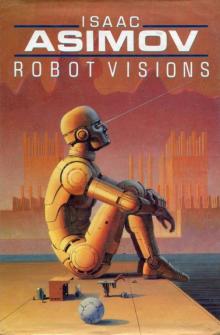 Robot Visions
Robot Visions Lucky Starr And The Moons of Jupiter
Lucky Starr And The Moons of Jupiter Lucky Starr and the Big Sun of Mercury
Lucky Starr and the Big Sun of Mercury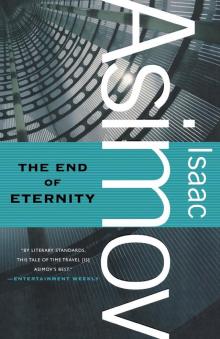 The End of Eternity
The End of Eternity The Bicentennial Man and Other Stories
The Bicentennial Man and Other Stories Lucky Starr And The Rings Of Saturn
Lucky Starr And The Rings Of Saturn Buy Jupiter and Other Stories
Buy Jupiter and Other Stories Forward the Foundation
Forward the Foundation Lucky Starr and the Oceans of Venus
Lucky Starr and the Oceans of Venus The Positronic Man
The Positronic Man The Portable Star
The Portable Star Asimovs Mysteries
Asimovs Mysteries Earth Is Room Enough
Earth Is Room Enough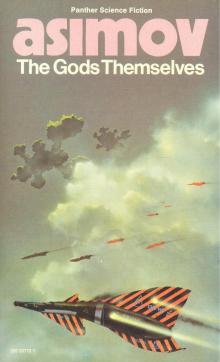 The Gods Themselves
The Gods Themselves Youth
Youth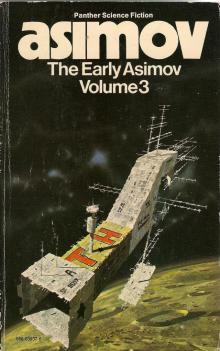 The Early Asimov Volume 3
The Early Asimov Volume 3 The Winds of Change and Other Stories
The Winds of Change and Other Stories Of Time, Space, and Other Things
Of Time, Space, and Other Things Nine Tomorrows
Nine Tomorrows Time Warps
Time Warps Robots and Empire
Robots and Empire Young Star Travelers
Young Star Travelers Fantastic Voyage II: Destination Brain
Fantastic Voyage II: Destination Brain Second Foundation
Second Foundation The Rest of the Robots
The Rest of the Robots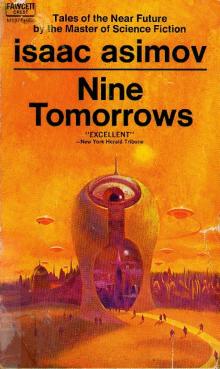 NINE TOMORROWS Tales of the Near Future
NINE TOMORROWS Tales of the Near Future Daneel Olivaw 1 - The Caves of Steel
Daneel Olivaw 1 - The Caves of Steel THE BICENTENNIAL MAN
THE BICENTENNIAL MAN David Starr Space Ranger (lucky starr)
David Starr Space Ranger (lucky starr)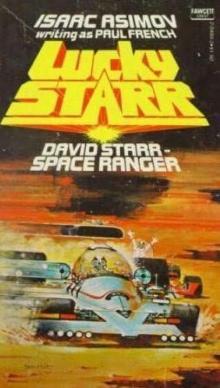 David Starr Space Ranger (ls)
David Starr Space Ranger (ls) Lucky Starr And The Big Sun Of Mercury ls-4
Lucky Starr And The Big Sun Of Mercury ls-4 Pebble In The Sky te-1
Pebble In The Sky te-1 Asimov’s Future History Volume 9
Asimov’s Future History Volume 9 Gold: The Final Science Fiction Collection
Gold: The Final Science Fiction Collection Foundation and Earth f-7
Foundation and Earth f-7 Asimov's New Guide to Science
Asimov's New Guide to Science STORM OVER WARLOCK
STORM OVER WARLOCK Stars, Like Dust
Stars, Like Dust Norby The Mixed-Up Robot
Norby The Mixed-Up Robot Found!
Found! Asimov’s Future History Volume 11
Asimov’s Future History Volume 11 Second Foundation f-5
Second Foundation f-5 Asimov’s Future History Volume 15
Asimov’s Future History Volume 15 The Early Asimov. Volume 1
The Early Asimov. Volume 1 Secound Foundation
Secound Foundation Daneel Olivaw 3 - The Robots of Dawn
Daneel Olivaw 3 - The Robots of Dawn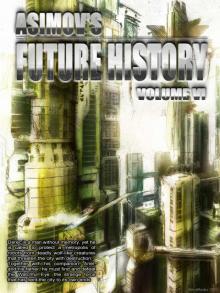 Asimov’s Future History Volume 6
Asimov’s Future History Volume 6 The Early Asimov. Volume 2
The Early Asimov. Volume 2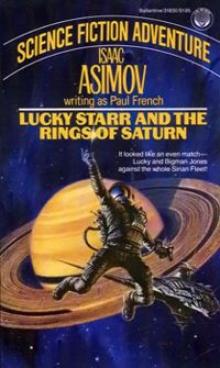 Lucky Starr And The Rings Of Saturn ls-6
Lucky Starr And The Rings Of Saturn ls-6 100 Malicious Little Mysteries
100 Malicious Little Mysteries Forward the Foundation f-2
Forward the Foundation f-2 I.Asimov: A Memoir
I.Asimov: A Memoir Foundation's Edge f-6
Foundation's Edge f-6 Lucky Starr and the Pirates of the Asteroids ls-2
Lucky Starr and the Pirates of the Asteroids ls-2 Robot City 1 & 2
Robot City 1 & 2 The Fourth Science Fiction Megapack
The Fourth Science Fiction Megapack Asimov’s Future History Volume 16
Asimov’s Future History Volume 16 The Dim Rumble
The Dim Rumble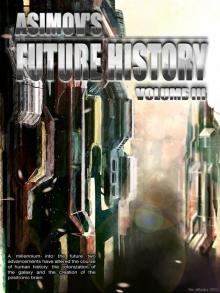 Asimov's Future History Volume 3
Asimov's Future History Volume 3 The Currents Of Space te-3
The Currents Of Space te-3 Asimov’s Guide To Shakespear. Volume 1
Asimov’s Guide To Shakespear. Volume 1 Asimov’s Future History Volume 13
Asimov’s Future History Volume 13 Asimov’s Future History Volume 12
Asimov’s Future History Volume 12 The Secret Sense
The Secret Sense Of Time and Space and Other Things
Of Time and Space and Other Things Norby tnc-2
Norby tnc-2 Norby The Mixed-Up Robot tnc-1
Norby The Mixed-Up Robot tnc-1 Misbegotten Missionary
Misbegotten Missionary Asimov’s Future History Volume 19
Asimov’s Future History Volume 19 Fantastic Voyage II: Destination Brain fv-2
Fantastic Voyage II: Destination Brain fv-2 Asimov’s Future History Volume 10
Asimov’s Future History Volume 10 Asimov's Future History Volume 2
Asimov's Future History Volume 2 Feeling of Power
Feeling of Power In the Beginning
In the Beginning The Caves of Steel trs-1
The Caves of Steel trs-1 Asimov's Future History Vol 2
Asimov's Future History Vol 2 Caliban c-1
Caliban c-1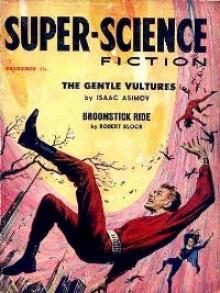 The Gentle Vultures
The Gentle Vultures Utopia c-3
Utopia c-3 Prelude to Foundation f-1
Prelude to Foundation f-1 Short Stories Vol.1
Short Stories Vol.1 Asimov’s Future History Volume 8
Asimov’s Future History Volume 8 Daneel Olivaw 4 - Robots and Empire
Daneel Olivaw 4 - Robots and Empire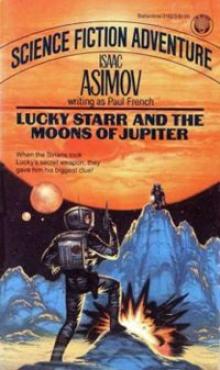 Lucky Starr The And The Moons of Jupiter ls-5
Lucky Starr The And The Moons of Jupiter ls-5 Gold
Gold Asimov’s Future History Volume 4
Asimov’s Future History Volume 4 Foundation and Empire f-4
Foundation and Empire f-4 Potential
Potential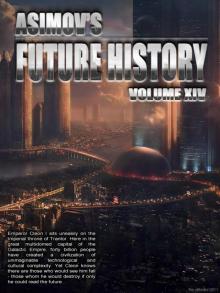 Asimov’s Future History Volume 14
Asimov’s Future History Volume 14 Asimov’s Future History Volume 7
Asimov’s Future History Volume 7 Daneel Olivaw 2 - The Naked Sun
Daneel Olivaw 2 - The Naked Sun Lucky Starr and the Pirates of the Asteroids
Lucky Starr and the Pirates of the Asteroids Foundation f-3
Foundation f-3 All the Troubles of the World
All the Troubles of the World Cleon the Emperor
Cleon the Emperor Asimov's Future History Volume 5
Asimov's Future History Volume 5 Asimov’s Future History Volume 20
Asimov’s Future History Volume 20 Robots and Empire trs-4
Robots and Empire trs-4 Profession
Profession It's Been a Good Life
It's Been a Good Life The Robots of Dawn trs-3
The Robots of Dawn trs-3 Lucky Starr And The Oceanf Of Venus ls-3
Lucky Starr And The Oceanf Of Venus ls-3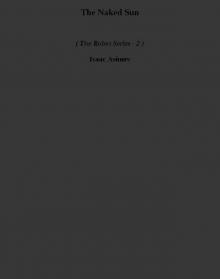 The Naked Sun trs-2
The Naked Sun trs-2 Asimov's Future History Volume 1
Asimov's Future History Volume 1